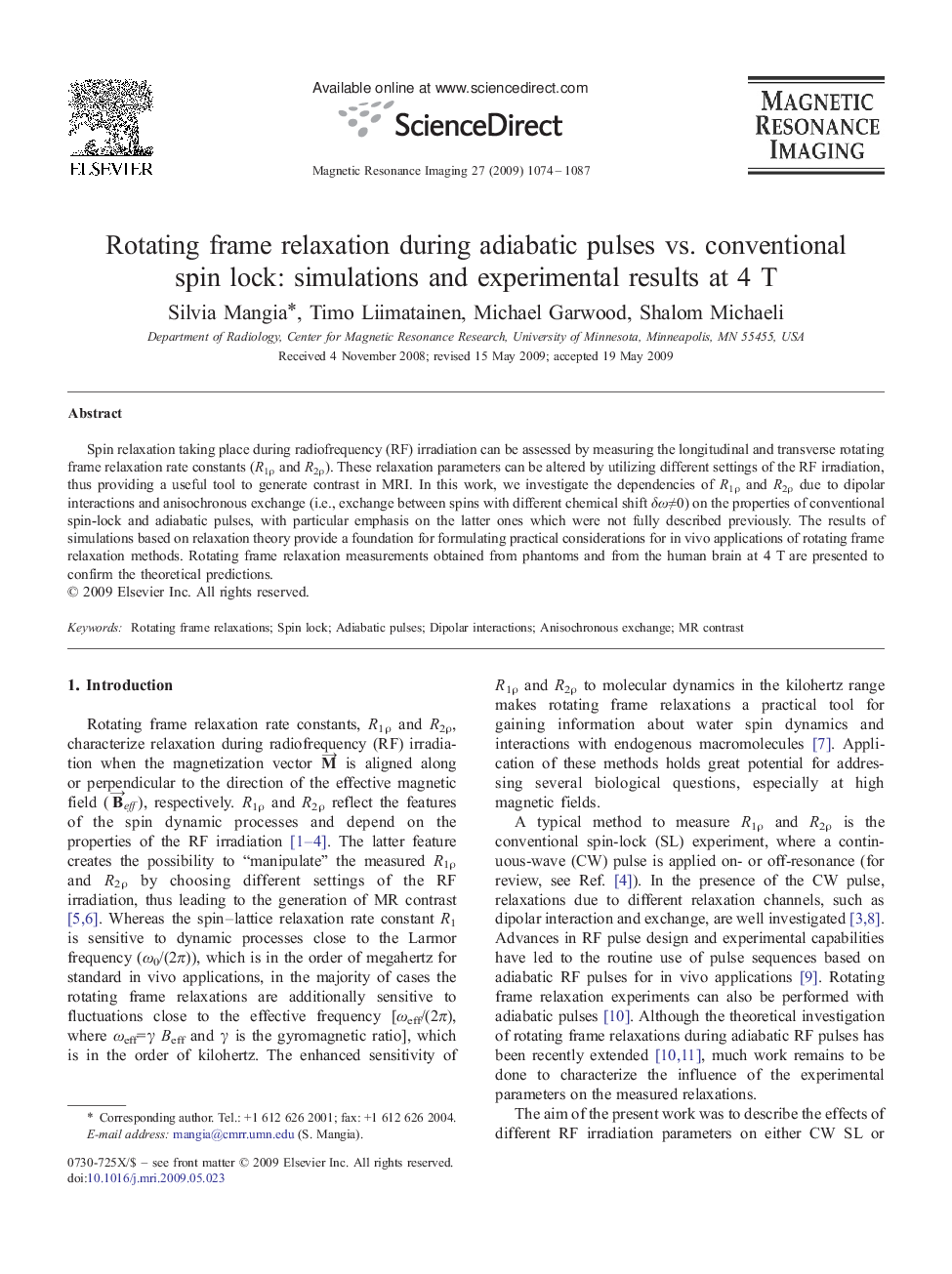| Article ID | Journal | Published Year | Pages | File Type |
|---|---|---|---|---|
| 1807756 | Magnetic Resonance Imaging | 2009 | 14 Pages |
Spin relaxation taking place during radiofrequency (RF) irradiation can be assessed by measuring the longitudinal and transverse rotating frame relaxation rate constants (R1ρ and R2ρ). These relaxation parameters can be altered by utilizing different settings of the RF irradiation, thus providing a useful tool to generate contrast in MRI. In this work, we investigate the dependencies of R1ρ and R2ρ due to dipolar interactions and anisochronous exchange (i.e., exchange between spins with different chemical shift δω≠0) on the properties of conventional spin-lock and adiabatic pulses, with particular emphasis on the latter ones which were not fully described previously. The results of simulations based on relaxation theory provide a foundation for formulating practical considerations for in vivo applications of rotating frame relaxation methods. Rotating frame relaxation measurements obtained from phantoms and from the human brain at 4 T are presented to confirm the theoretical predictions.
